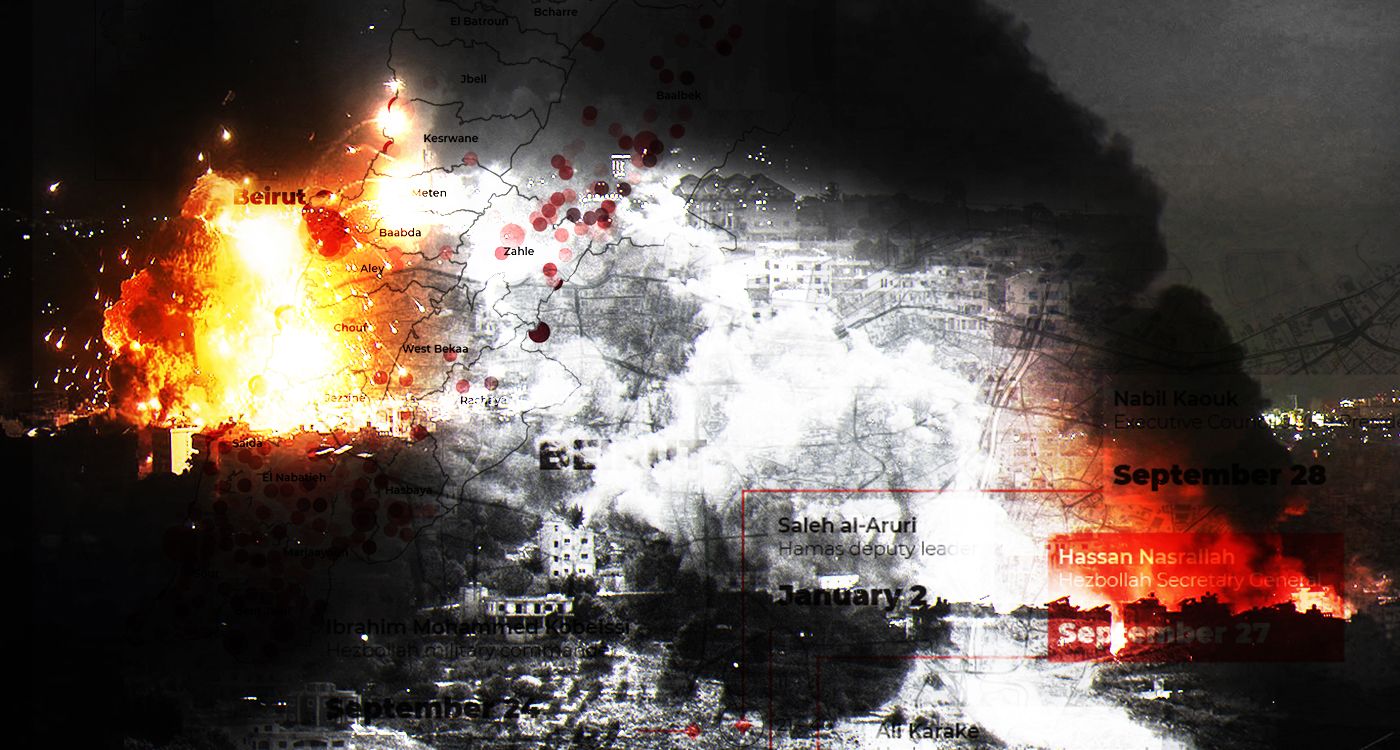
Turned into a “support front” by Hezbollah, Lebanon appears to be following Gaza’s path one year after Hamas’ October 7 attack on Israel. From the southern front’s opening on October 8, 2023, to the current Israeli offensive on the country, how did we get here?
On October 7, 2023, the world awoke to the unprecedented news of Hamas’ attack on Israel. The operation, dubbed “Al-Aqsa Flood,” triggered a retaliatory response from the Hebrew State called “Iron Swords.”
All of this unfolded in Gaza.
The very next day, early on October 8, Hezbollah launched guided missiles and artillery shells at three fortified Israeli positions in the Shebaa Farms — an area occupied by Israel but claimed by Lebanon, located in the Golan Heights, a Syrian plateau occupied in 1967 and later annexed by Israel.
Hezbollah, the pro-Iranian formation, claimed responsibility for the attack in a statement that morning, asserting that it was part of efforts to “liberate Lebanese territories still occupied by Israel and to express solidarity with the Palestinian resistance.”
Israel’s military responded immediately, announcing it had struck Hezbollah infrastructure with a drone.
According to the Lebanese National News Agency (NNA), a baby and a child were injured by shattered glass.
This marked the beginning of yet another onslaught of fire and blood in Lebanon.
On September 23, 2024, Israel launched “Operation Northern Arrows” against Lebanon — an aerial military operation that has become the deadliest since the end of the civil war. Israeli strikes are now hitting several regions across Lebanon, particularly in the south, the Beqaa Valley, and the capital, Beirut. The military continues to broaden its range of attacks.
As of October 7, 2024, more than 2,000 people have died and nearly 10,000 have been injured, according to reports from the Lebanese Ministry of Health.
But how did we reach this point?
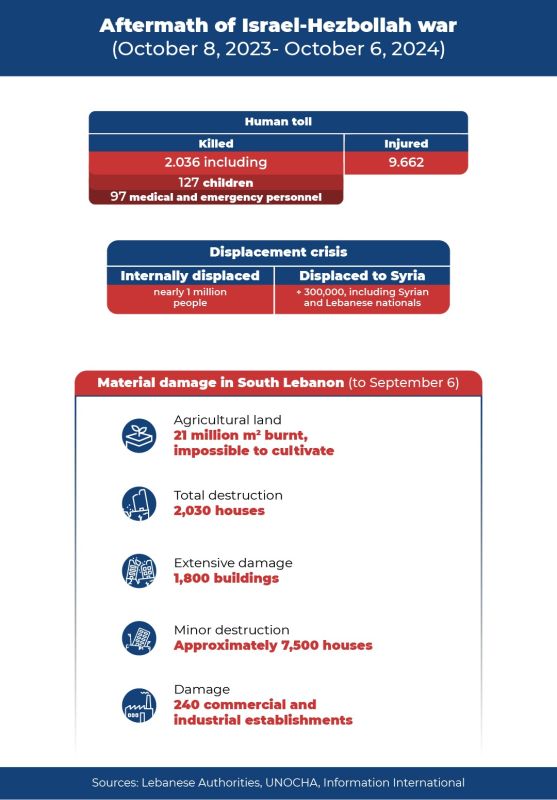
Lebanon Turned into a “Support Front” for Gaza
Nearly a month has passed since hostilities erupted between Hezbollah and Israel, marked by escalating violence in southern Lebanon and a period of silence from Secretary-General Hassan Nasrallah, leaving his bewildered and impatient base in suspense.
On November 3, 2023, Nasrallah finally addressed the situation, declaring that “the Lebanese front is a front of support, diversion, and attrition.” In other words, Hezbollah has assumed the mission of supporting Hamas in its war against Israel in Gaza by diverting the attention of the Israeli military and scattering its forces.
During his address, the Secretary-General underscored the unity of the fronts in the region, specifically those aligned with the ‘resistance axis,’ which includes various Iranian proxies in Lebanon, Syria, Iraq, Yemen, and, of course, Gaza.
Consequently, Nasrallah has consistently linked the Lebanese front to that of the Palestinian enclave, tirelessly reiterating that Hezbollah will only cease its fire on Israel when Tel Aviv halts its aggression against Gaza.
This refrain has been echoed for nearly a year in each of his interventions, where he has sought to justify Hezbollah's military actions along the Lebanese-Israeli border. Throughout this time, he has shown little regard for the will of the people or the stance of the Lebanese government.
A Three-Phase Confrontation
Since the southern front opened on October 8, 2023, the confrontation between Hezbollah and Israel has unfolded in three key phases.
Phase 1: From October 8, 2023 to September 22, 2024
During this phase, the conflict was largely contained to southern Lebanon, with some strikes targeting the Beqaa, while others were conducted in the southern suburb of Beirut, focusing on key Hezbollah and Hamas figures.
Throughout this period, both sides largely adhered to what they called “rules of engagement,” designed to serve as a framework against the outbreak of a large-scale war.
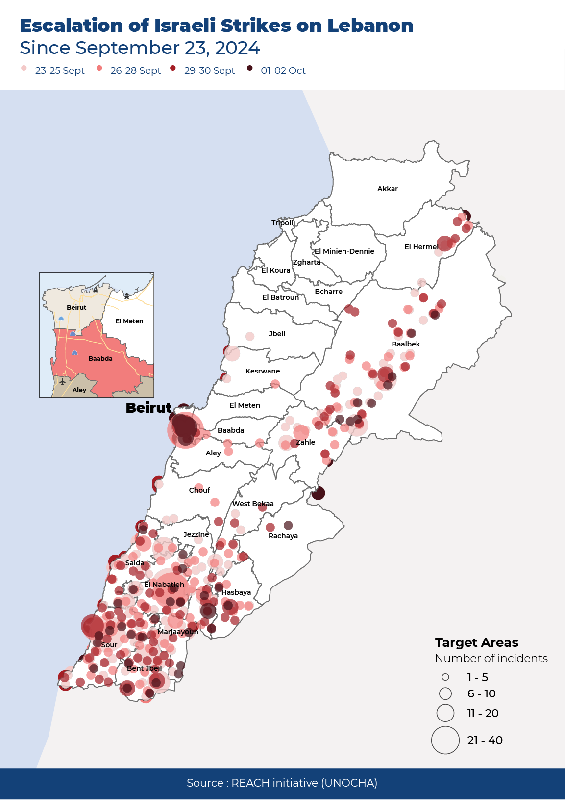
Phase 2: Starting September 23, 2024
September 23 marked a significant escalation in the military conflict as the Israeli Army launched ‘Operation Northern Arrows,’ conducting 1,100 airstrikes targeting 1,600 Hezbollah positions in southern Lebanon and the Beqaa Valley.
In just one day, the Israeli raids resulted in 558 deaths, including 35 children and 58 women, with 1,835 others injured.
Additionally, on September 17, Israel announced an expansion of its objectives in the war against Hamas in Gaza to include the front with Hezbollah along its northern border with Lebanon.
“The political and security cabinet has updated the goals of the war to include the safe return of residents from the north to their homes,” had stated the office of Israeli Prime Minister Benjamin Netanyahu in a press release.
Similarly, Israeli Defense Minister Yoav Gallant asserted that “military action” against Hezbollah was “the only way to ensure the return of northern Israeli residents to their homes.”
On September 18, Gallant further noted that the “center of gravity” in the conflict against Hamas was “shifting to the north.”
Israeli airstrikes now routinely target large sectors of Lebanon, primarily focusing on the south, Baalbeck-el Hermel, and the Beqaa.
The southern suburb of Beirut, a Hezbollah stronghold, is increasingly subjected to heavy raids that are extending to other parts of the capital, including neighborhoods such as Cola, Jnah, and streets near the airport. Weapon depots and Hezbollah infrastructure are targeted on a daily basis.
For the first time, the Tripoli region was hit on October 5, with an attack on the al-Beddawi camp (Refugee camp in north Lebanon).
Meanwhile, numerous evacuation orders are continuously issued by the Israeli Army to residents in various areas of southern Lebanon and Beirut.
On Hezbollah's side, their fire has also reached deeper into Israeli territory. Initially focused on the north, the group has expanded its targets to include areas around Haifa, the nearest metropolis to Lebanon, as well as the Mossad headquarters in the suburb of Tel Aviv, marking the first attack on this city since the conflict began.
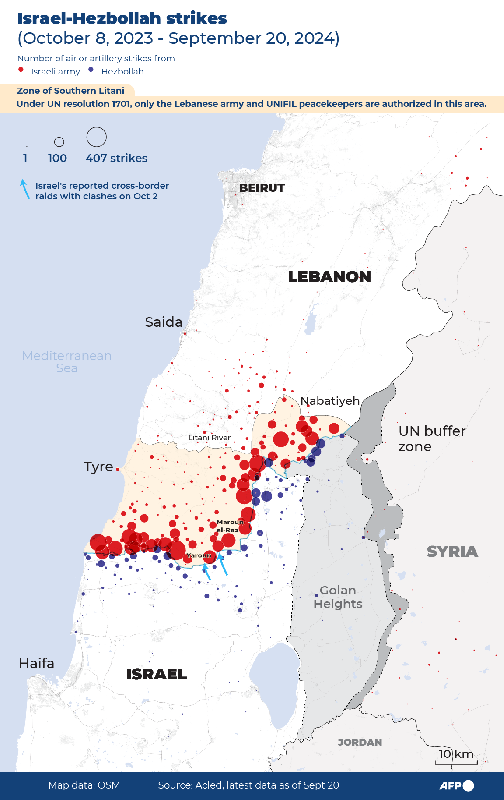
Phase 3: Ground Incursion
On the night of September 30, 2024, the Israeli Army announced the launch of “a limited, localized, and targeted ground offensive against Hezbollah positions in the border area,” as stated in an official release.
Since then, daily skirmishes have erupted with Hezbollah fighters in several villages near the border.
“These ground operations are based on recent and ongoing measures aimed at eliminating senior Hezbollah leaders and weakening the group's offensive capabilities,” revealed Israeli Defense Minister Yoav Gallant to his American counterpart, Lloyd Austin, according to reports from the Israeli ministry and cited by Reuters.
In this context, Israel's ambassador to France, Joshua Zarka, noted the day after the ground operations began that Israel “does not intend to invade Lebanon” or “remain for months,” but instead aims to “clear certain areas of Lebanon along our border,” during an interview with France Inter radio.
Since October 2023, Israel has positioned troops along the Lebanese border, with several redeployments occurring, particularly in June 2024. The Tel Aviv military had been preparing for this ground incursion scenario for months, with its execution depending solely on favorable timing.
Heavy Toll
Lebanon is paying an increasingly heavy toll, particularly following the recent escalation of military operations.
Between September 23 and October 2, 2024, Lebanese authorities reported nearly 1,100 deaths and 3,000 injuries. This ten-day toll from Israeli strikes is roughly equivalent to the casualties sustained over an entire month during the 2006 war.
Among the civilian victims, emergency personnel have also been significantly affected. On October 3, the government announced the deaths of over 40 rescue workers and firefighters within just three days due to Israeli strikes.
Additionally, the Lebanese Army reported the loss of two soldiers in Israeli strikes during the first week of October. One was killed at a targeted military post in Bint Jbeil, while the other lost his life in Taybeh (Marjayoun) while engaged in rescue operations with the Lebanese Red Cross.
This marked a notable first. “The military personnel retaliated to Israeli fires,” announced the Army in a communiqué released on October 3 via the X platform.
A Lebanese soldier was killed on December 5, 2023, in an airstrike targeting a military post in Odaisseh, southern Lebanon. Since then, numerous military posts along the border have been struck, though no additional casualties have been reported.
This crisis of displacement adds to the already heavy human toll, profoundly disrupting the lives of Lebanese people.
The United Nations High Commissioner for Refugees (UNHCR) reports that over one million people have been displaced within Lebanon, primarily from regions severely impacted by Israeli bombings, including southern Lebanon, the Beqaa, and the southern suburbs of Beirut.
On October 6, UNHCR chief Filippo Grandi condemned the “numerous violations of international humanitarian law that have occurred during the airstrikes in Lebanon.”
Meanwhile, the Lebanese Crisis Center has reported that 180,000 displaced individuals are currently housed in shelters.
Additionally, Imad Ashkar, the Director General of Education, stated that 40% of students enrolled in Lebanese schools have been displaced due to the ongoing Israeli bombardments.
Technological Warfare
Tel Aviv's military strategies distinguish themselves from previous conflicts through their integration of cutting-edge technology aimed at achieving military objectives.
Successful operations depend on precise intelligence. The Hebrew State has significantly invested in artificial intelligence to enhance tools capable of identifying both material and human targets. Programs such as The Gospel and Lavender have already been utilized by the Israeli military in Gaza. Whether these tools were also employed in planning strikes in Lebanon remains an unanswered question.
Nonetheless, Israel has succeeded in surprising the pro-Iranian group. Believing they could evade geolocation tracking, Hezbollah members turned to beepers and walkie-talkies for communication. The public became aware of this only when the Israeli Army detonated booby-trapped communication devices held by hundreds of civilian users.
On September 17 and 18, two simultaneous waves of explosions struck multiple regions in Lebanon, including the southern areas, the Beqaa, and especially Hezbollah's stronghold in the southern suburb of Beirut. The Lebanese Ministry of Health reported a total of 39 deaths and 2,931 injuries from these attacks.
Furthermore, it is crucial to acknowledge the high precision of guided drones, which are employed for the targeted assassinations of high-ranking officials, alongside the devastating destructive power of Israeli missiles.
This strategic approach has enabled Israel to methodically dismantle Hezbollah's hierarchical structure, concentrating on the targeted elimination of key leaders at the organization's summit.
Hezbollah Decimated
A series of orchestrated assassinations carried out by Tel Aviv has gradually targeted high-ranking members of the pro-Iranian organization.
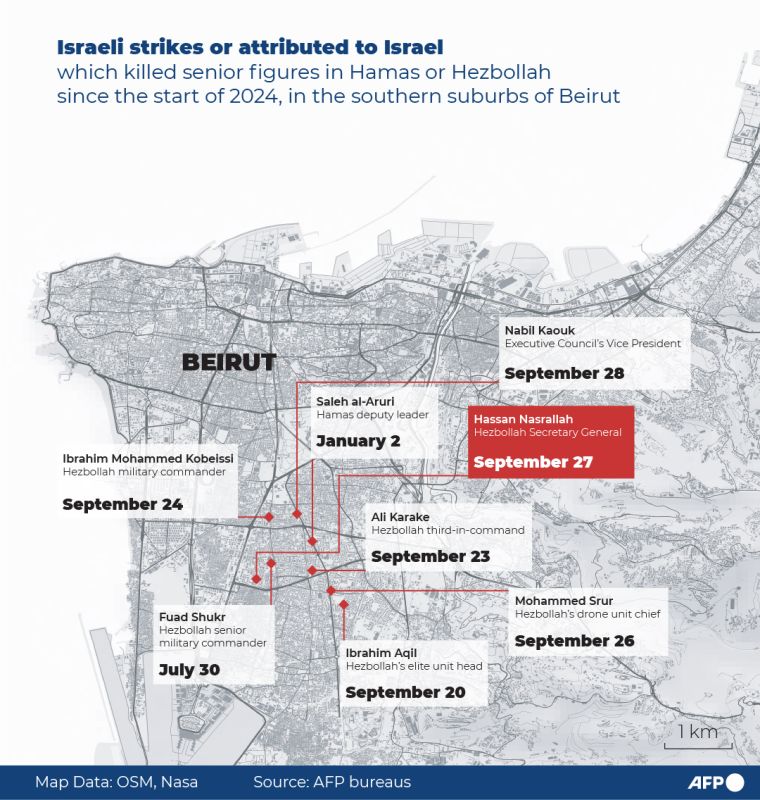
At the top of Hezbollah's hierarchy is its leader, Hassan Nasrallah, who was assassinated on September 27, 2024, during a series of strikes — the most powerful since 2006 — in Haret Hreik, a southern suburb of Beirut.
In this assault, dozens of 900 kg cluster bombs were unleashed by F-35 aircraft on Hezbollah's underground headquarters, where Nasrallah was meeting with senior officials. The airstrike resulted in the collapse of six residential buildings in mere seconds, leading to 11 deaths and 108 injuries.
“The message is clear: anyone who threatens the citizens of Israel will be reached,” declared General Herzi Halevi, Chief of Staff of the Israeli Army, the day following the deadly strike.
By eliminating the Secretary General of Hezbollah, Israel effectively decapitated the Shura Council, which serves as the organization’s highest authority. The surviving members of this council include Naim Kassem, Deputy Secretary; Mohammed Yazbek, Head of the Judicial Council; Ibrahim A. al-Sayyed, Head of the Political Council; and MP Mohammad Raad, Head of the Parliamentary Action Council.
Among the notable members of the Jihad Council, Nabil Kaouk, Deputy Head of the Executive Council, was killed on September 28 in a strike in Chiyah.
Fouad Shokr, a prominent military commander and Nasrallah's right-hand man, was eliminated on July 30 in a targeted attack in southern Beirut. This represented a significant blow to Hezbollah, as Shokr was one of the party's founders. According to Israeli sources, he was implicated in an attack that claimed the lives of 12 youths in Majdal Shams, a Druze town in the Golan Heights, on July 27. Hezbollah has denied responsibility for that incident.
Ibrahim Aqil, Head of Hezbollah's elite al-Radwan Unit, was assassinated on September 20, along with 15 other members of this unit, in an Israeli strike on a building in Beirut’s southern suburb. The Lebanese authorities reported a total of 55 deaths, including civilians. Classified as a “terrorist” by the US State Department, Aqil was wanted by Washington for his role in the deadly attacks on the US Embassy in 1983.
Within the Jihad Council, the surviving members include Hussein al-Khaili, Political Advisor to the Secretary-General; Wafiq Safa, Head of the Liaison and Coordination Unit; and Hashem Saffieddine, Head of the Executive Council, whose fate remains uncertain.
Several high-ranking members have also been eliminated in targeted strikes within the southern suburbs of Beirut.
Ali Karaki, identified as Hezbollah's military number three, was killed alongside Nasrallah on September 27. As the Commander of the southern front in Lebanon, he had narrowly escaped an assassination attempt just days earlier, on September 23.
Mohammad Srour, the Head of Hezbollah's Drone Unit, was killed on September 26. Sources close to the pro-Iranian group revealed that the mathematician was among the senior commanders sent to Yemen to train the Houthi rebels, who are also backed by Iran.
Ibrahim Kobeissi, Commander of the Precision Missile Unit, was assassinated on September 24. The Israeli Army labeled Kobeissi as “a key source of expertise in missile technology, with close ties to Hezbollah's senior military officials.”
Wissam Tawil, a Commander of the al-Radwan Force, was targeted and killed on January 8 in an Israeli airstrike that struck his vehicle in southern Lebanon.
Additionally, two of the three commanders overseeing sectors in southern Lebanon have also been killed: Mohammad Nasser on July 3 and Taleb Abdallah on June 11.
Despite a severely weakened command structure, Hezbollah remains firmly entrenched in its positions. The party insists that a ceasefire in Gaza must precede any halt in hostilities in Lebanon. Its ground units continue to launch fire into Israeli territory. According to the American think tank Center for Strategic and International Studies (CSIS), Hezbollah has deployed less than one-twelfth of its estimated arsenal, which exceeds 130,000 munitions. The group’s strength primarily lies in its long-range projectiles, capable of reaching targets beyond 100 kilometers.
Simultaneously, Israel is determined to dismantle the pro-Iranian formation to permanently secure its northern border.
In all these dynamics, the official Lebanon is notably absent.
Lebanon is facing “one of the most perilous phases in its history,” warned Caretaker Prime Minister Najib Mikati. His guidance to the Lebanese populace has been limited to calls for “prayer” and “patience,” while the Ministry of Foreign Affairs has filed a series of complaints against Israel with the United Nations Security Council.
In this context, what fate awaits UN Resolution 1701? Israel has set forth a condition requiring the withdrawal of Hezbollah fighters to the north of the Litani River, a demand that the group has adamantly refused.
In light of recent developments, there are growing fears that Lebanon may become another Gaza, a concern voiced by United Nations Secretary-General Antonio Guterres on September 22.
The Lebanese Army appears to be the last bastion of hope for this beleaguered nation. The pivotal question remains whether its Commander-in-Chief, General Joseph Aoun, can garner the necessary political and financial support necessary for a truly effective deployment in southern Lebanon.
After enduring a heavy toll time and again to champion the causes of foreign nations and their peoples, hasn’t the moment finally arrived for Lebanon to reclaim its sovereignty?




Comments